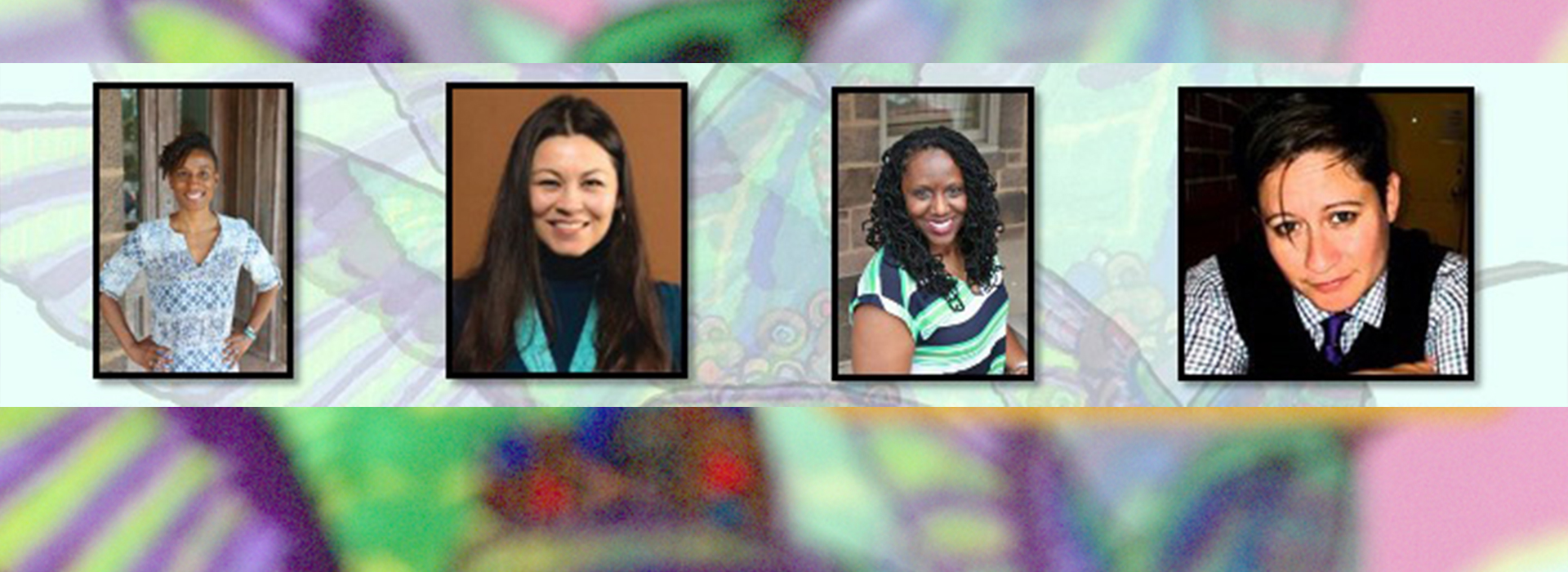Joe Gutierrez | CSUSB Office of Strategic Communication | (951) 236-4522 | joeg@csusb.edu

The Women of Color in Academia at Cal State San Bernardino hosted a free virtual CSU-wide symposium on June 30.
The event, which was sponsored by the CSUSB Office of Academic Affairs, featured workgroups and four panelists, who shared research findings that center on the intersectional experiences of Black, Indigenous and Women of Color (BIWOC) faculty, discussed strategies to interrupt heteropatriarchal systems in higher education, and moved toward healing as BIWOC faculty.
The four panelists were:
- Kimberly Griffin, professor in the Higher Education, Student Affairs, and International Education Policy Program at the University of Maryland, and associate dean for Graduate Studies and Faculty Affairs in the College of Education. Her scholarship focuses on diversity within the Black community; mentoring and professional development; and equity and inclusion in graduate and faculty communities. She currently serves as the editor for The Journal of Diversity in Higher Education.
- Leslie D. Gonzales, associate professor in the Higher, Adult, and Lifelong Learning unit at Michigan State University in the College of Education. She studies the academic profession, particularly the evaluation of scholars and their scholarship with a specific interest in understanding how evaluation norms and practices mediate opportunity for historically underrepresented individuals. She serves as the Faculty Excellence Advocate in the College of Education at MSU and is an associate editor at the Review of Higher Education.
- Lissa D. Ramirez-Stapleton, an associate professor at California State University, Northridge in the Department of Deaf Studies and core faculty for the Educational Leadership and Policy Studies program. Her research focuses on equity and access, identity development, and the educational history of deaf students, faculty and staff with a particular interest in the intersections of race, gender and disability. She is the chair elect for the Association for the Study of Higher Education’s Council on Ethnic Participation and a member of the National Black Deaf Advocates.
- Yvette J. Saavedra, assistant professor in Women’s, Gender, and Sexuality Studies at the University of Oregon. She is a historian whose specializations include U.S. History, Borderlands History, Chicanx History, and Gender and Sexuality History. Her research examines the development of race masculinity, femininity, sexuality and power, within colonialism and nationalism in the 19th Century U.S./Mexico Borderlands. She has published on topics ranging from Chicana Feminism, Chicana/o History, LGBTQ History, U.S. History, and Borderlands History. Saavedra serves as the chair of Mujeres Activas en Letras y Cambio Social /Women Active in Letters and Social Change (MALCS).

After welcome remarks, Griffin and Gonzales shared their research and explored several questions and topics involving women of color in the academy, including why are there so few women of color in the academy, why are they placed in precarious locations, and why retaining women of color is important. They also reviewed the literature and re-occurring themes concerning the experience of women of color in the academy.
“We find that [women of color] are less likely to be on the tenure track, tenured, and at senior levels of the institution – as full professors or senior administrators – than both white women and men of color,” Griffin said.
Griffin and Gonzales highlighted five common core challenges regarding the barriers that prevent institutions from retaining, recruiting, supporting and sustaining women of color in the academy, which include:
- Women of color are presumed incompetent;
- Women of color are represented in such small numbers, which lead to isolation and exclusion;
- Women of color are expected to be engaged in diversity inclusion work for the institution, resulting in cultural taxation and emotional labor;
- Women of color experience less mentorship and sponsorship; and
- Women of color experience epistemic exclusion and injustice, which suggests that the work of women of color scholars is often considered outside the mainstream, invalid and less rigorous because it often addresses the needs and experiences of communities of color over those who are most marginalized.
“If we think about these themes, one of the things that is the most challenging about addressing them is that they aren’t just situated in a very specific place,” Griffin said. “If we think about the holistic nature of our lives as faculty members, from hiring to teaching to research to service to evaluation and promotion, these themes cut across all of them.”
Griffin and Gonzales said the three main, unique contributions made by women of color include mentorship, teaching and research.
“Thinking about the unique contributions that women-of-color scholars bring to the academy, we can just ask, ‘What are all the new, interesting kinds of questions, the different ways of framing problems that women of color are bringing to the academy?’” Gonzales said. “We think these are worthwhile in safeguarding, promoting and, of course, retaining.”
Following Griffin and Gonzales’ presentation, Ramirez-Stapleton presented a heartfelt “love letter” to women-of-color faculty. According to Ramirez-Stapleton, there are 5,448 faculty who are women of color in the CSU system. She had asked these women what their experiences have been like at their CSU and shared some of those responses.
“These feelings are real,” she said after reading the last response. “They’re valid, often misunderstood, critical to understanding our full and robust experience. We are not just our work, but full people with complex identities, lives, experiences that influence our existence on campuses, our connections with students, our sense of belonging in our departments, and our ability to be successful.”
Saavedra, who is a former faculty member at CSUSB and who helped shape the university’s Women of Color in Academia, discussed the “importance of creating and fostering spaces that are critical for the survival, growth and support of Black, Indigenous and Women of Color faculty in academia.”
“Note that the first word I use in that list is ‘survival.’ The reason is that for many of us, academia is a place we need to survive on a daily basis,” Saavedra said. “On a daily basis, we contend with the forces of institutionalized racism, sexism, heterosexism, homophobia, classism and countless other -isms as well as the very real-life consequences of living and working within these power dynamics.”
Saavedra, who identifies as a Chicana lesbian, first-generation college graduate and first-generation professor, noted that they all have unique experiences.
She asked, “How do I survive and thrive in an institution and process in which the discourse does not speak to our lived realities?”
“The answer to this question lies in our ability to create spaces of support and collective liberation alongside discourses through which to articulate our bodies, our realities, our experiences within academia,” she said.
The symposium concluded with workgroups tailored to women-of-color faculty, staff/administrators, and students.
The Women of Color in Academia at CSUSB, which was established in fall 2016, was created to converge teaching, research and social action, as well as to make a space in which women-of-color faculty can discuss these aspects of their professional careers through an intersectional perspective.